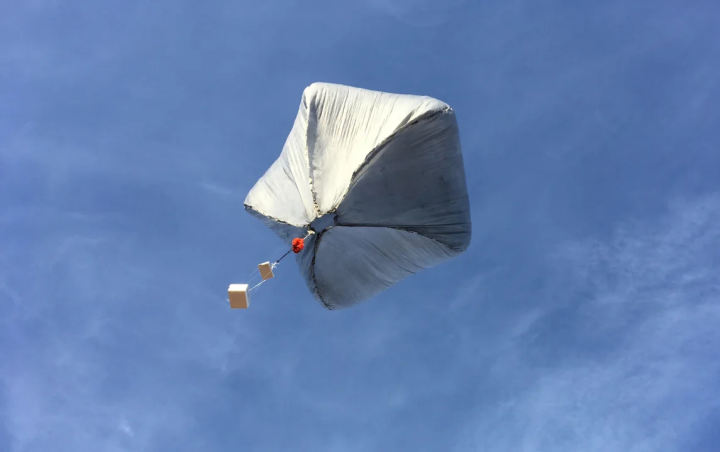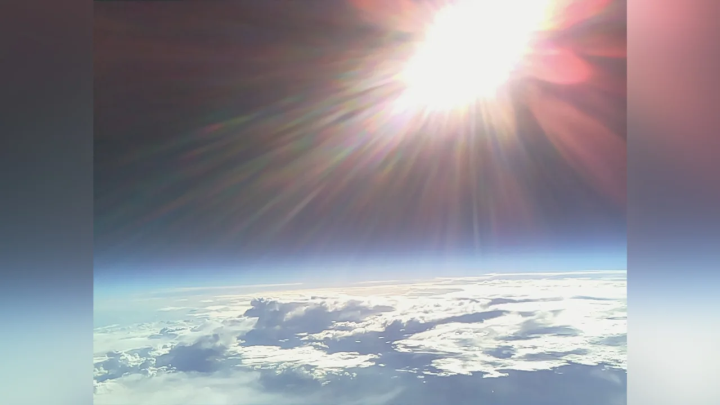According to scientist Daniel Bowman of the Sandia Laboratory in New Mexico (USA), in the Earth's stratosphere there exists a type of sound at low frequencies that the human ear cannot hear (also known as infrasound - over 16 Hz).
About the stratosphere – this is the second layer of the Earth’s atmosphere (from 16,000 m to 52,000 m) and just below it is the ozone layer which absorbs and scatters the sun’s ultraviolet radiation. The thin, dry air of the stratosphere is where jets and weather balloons reach their maximum altitude, and the relatively calm atmosphere is rarely disturbed by air turbulence.

The balloon was used by Bowman and his colleagues to record sounds in the Earth's stratosphere. (Photo: CNN)
Bowman and his colleagues previously used weather balloons equipped with cameras to record atmospheric sounds from Earth to space and vice versa. Now their balloons are equipped with more equipment and solar batteries to allow them to operate for longer periods of time.
Bowman's experiment is also the first experiment to record sound in the stratosphere by scientists after 50 years. Using a balloon with multiple sensors at the same time will give a more accurate result than using a meteorological plane.
Scientist Bowman also shared that he has conducted many experiments recording sounds of natural and man-made phenomena such as sounds from a volcanic eruption, thunder, ocean waves, propeller plane sounds, city sounds from the sky, a rocket launch, earthquakes... Sometimes Bowman also recorded sounds of unknown origin in the sky.
The altitude advantage of the balloons means lower noise levels and increased recording range – just like we can hear the Earth. However, using balloons for airborne experiments also poses challenges for scientists because the stratosphere is a harsh environment with constant temperature swings between hot and cold.
“Solar balloons are a bit slow and not every launch is successful,” Bowman said.

This view from one of Sandia Laboratories' solar-powered balloons was taken at an altitude of about 21,000 meters above the Earth's surface.
However, Mr. Bowman said it is difficult to determine the source of low-frequency sounds in the stratosphere, they could be man-made, such as a jet plane flying over the area, a rocket launch, the noise of a cargo ship moving at sea or the formation of a storm far from the test site. The source of the sound can only be determined if there is enough data.
Bowman said that the sounds could have reached the stratosphere and their sound waves were bounced back and forth so many times that they became distorted compared to the original sound. According to Bowman, it is not always possible to record sounds in the stratosphere even in the same location.
This prompted Bowman and his colleagues to decode the mystery of the sounds in the Earth's stratosphere. This not only helps determine seasonal changes in the Earth's atmosphere, but also provides important data to support scientists conducting research on other planetary atmospheres during space exploration missions.
Tra Khanh (Source: CNN)
Useful
Emotion
Creative
Unique
Wrath
Source




















































![[Maritime News] More than 80% of global container shipping capacity is in the hands of MSC and major shipping alliances](https://vphoto.vietnam.vn/thumb/402x226/vietnam/resource/IMAGE/2025/7/16/6b4d586c984b4cbf8c5680352b9eaeb0)













































Comment (0)